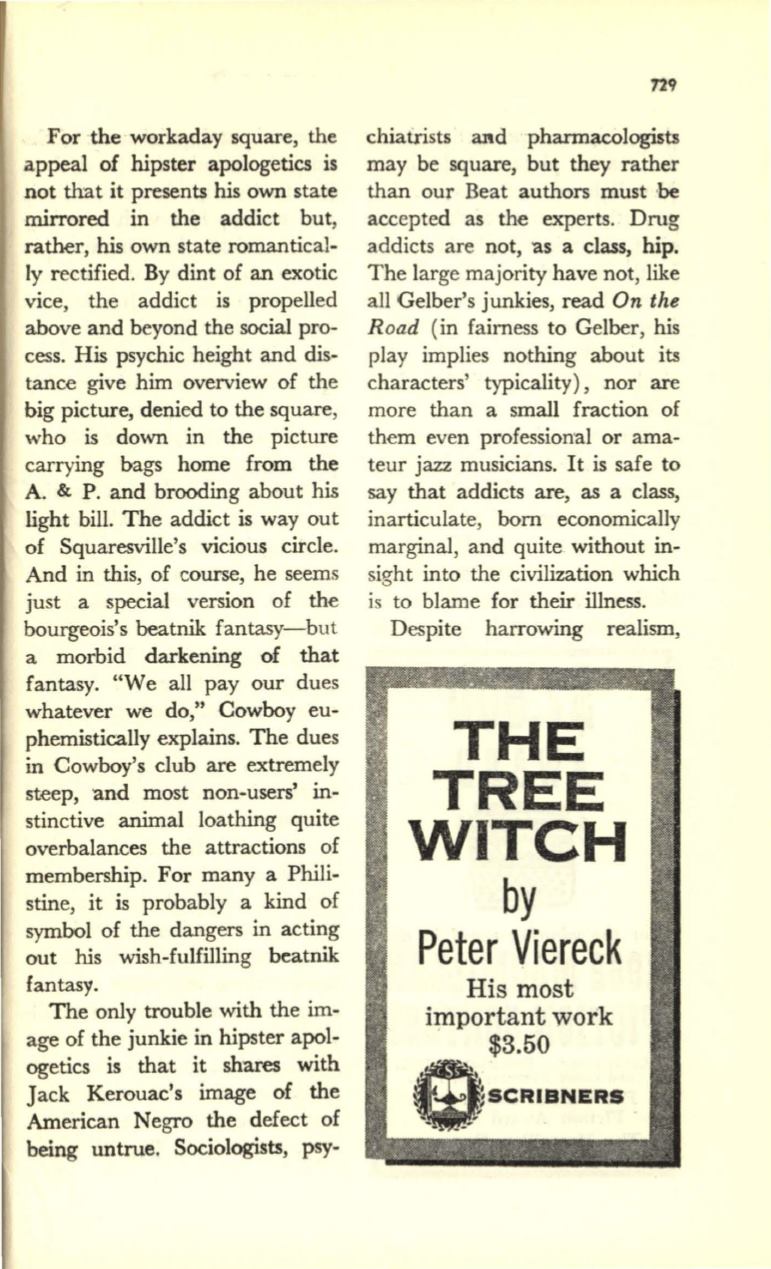
For the workaday square, the
appeal of hipster apologetics is
not that it presents his own state
mirrored in the addict but,
rather, his own state romantical–
ly rectified.
By
dint of an exotic
vice, the addict is propelled
above and beyond the social pro–
cess. His psychic height and dis–
tance give him overview of the
big picture, denied to the square,
who is down in the picture
carrying bags home from the
A.
&
P. and brooding about his
light bill. The addict is way out
of Squaresville's vicious circle.
And in this, of course, he seems
just a special version of the
bourgeois's beatnik fantasy- but
a morbid darkening of that
fantasy. "We all pay our dues
whatever we do," Cowboy eu–
phemistically explains. The dues
in
Cowboy's club are extremely
steep, and most non-users'
in–
stinctive animal loathing quite
overbalances the attractions of
membership. For many a Phili–
stine, it is probably a kind of
symbol of the dangers in acting
out his wish-fulfilling beatnik
fantasy.
The only trouble with the
im–
age of the junkie in hipster apol–
ogetics is that it shares with
Jack Kerouac's image of the
American Negro the defect of
being untrue. Sociologists, psy-
129
chiatrists and pharmacologists
may be square, but they rather
than our Beat authors must be
accepted as the experts. Drug
addicts are not, as a class, hip.
The large majority have not, like
all Gelber's junkies, read
On the
Road
(in fairness to Gelber, his
play implies nothing about its
characters' typicality), nor are
more than a small fraction of
them even professional or ama–
teur jazz musicians.
It
is safe to
say that addicts are, as a class,
inarticulate, born economically
marginal, and quite without
in–
sight into the civilization which
is to blame for their illness.
Despite harrowing realism,
THE
TREE
WITCH
by
Peter Viereck
His most
i~portant
work
$3.50
GSCRIBNERS


